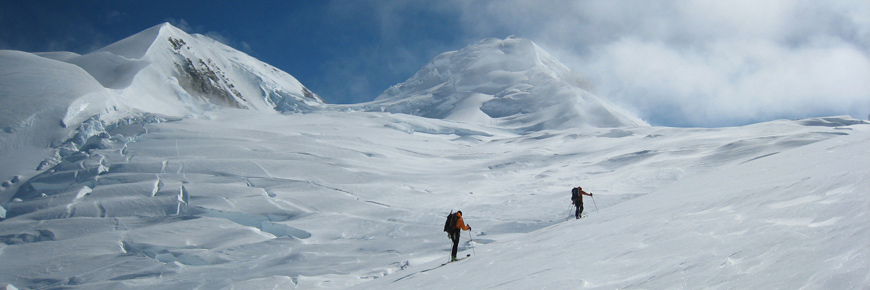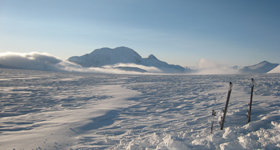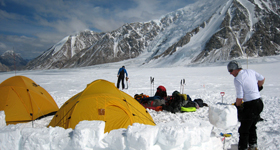
Mountaineering hazards and safety
Kluane National Park and Reserve
Mountaineering parties must be entirely self-sufficient and able to handle any emergency situations on their own. In the event of an emergency you should be prepared for lengthy delays in search and rescue response times due to weather conditions and/or the availability of both aircraft and rescue personnel.
Emergency contact information
Parks Canada 24 hr emergency dispatch
1-780-852-3100
Communication
Reliable communication with someone outside of the Icefield Ranges is strongly recommended for all expeditions. It is important to be able to call for assistance in the event of injury or illness and to request food drops, weather information and transportation arrangements.

Satellite telephones are the preferred form of communications. These may be rented locally from telecommunications business in Whitehorse, Yukon. Other satellite GPS messenger devices, such as a SPOT® or inReach®, are also effective.
Personal locator beacons (PLB’s) are another option for emergency notification. These lightweight devices can be manually activated to transmit a distress signal that is received by satellite and relayed to a National Search and Rescue organisation. In Canada these devices should transmit at 406 MHz and should be registered with the Canadian Beacon Registry.
Rescue capability
All expeditions should be fully capable of self-rescue and should be able to bring their sick or injured members to a location where an aircraft landing and evacuation is possible. Expeditions of four or more people are stronger and more capable of self-rescue than smaller groups.
In the event of an emergency you should be prepared for lengthy delays in search and rescue response times due to:
- Delays in reporting the emergency
- Availability of suitable aircraft
- Adverse weather conditions
- Elevation and location of the sick, injured or stranded persons
- Time required for members of a rescue team to arrive and acclimatize
Climate and weather
The weather within the Icefield Ranges remains in winter-like conditions all year round. Severe storms involving cold temperatures, high winds in excess of 160 km/h (100 mph) and excessive snowfalls are common and can last for several days at a time. Prolonged confinement within cramped tents or snow caves often occurs due to bad weather.

Air temperatures can range from minus 40 degrees Celsius to well above freezing during the climbing season depending on elevation, aspect and current weather patterns. Cold injuries such as frostbite and hypothermia are always possible and should be guarded against with high quality winter mountaineering clothing, sleeping bags and tents. Intense solar radiation and long hours of daylight make sunscreen and good quality sunglasses a necessity.
Food high in fat and carbohydrates is recommended for maintaining strength and warmth. Sufficient water must be consumed to prevent dehydration.
- Allow for extra time, food and fuel in the event of delays in flying into and out of the Icefield Ranges.
Altitude
As a mountaineer you will be carrying loads of 20 to 40 kilograms (40 to 90 pounds) at altitudes of 2000 to 5700 meters (6,500 to 19,500 feet). Proper acclimatization must always be considered.
Acclimatize slowly: carry high and sleep low.
Acute mountain sickness may occur on routes that are ascended too rapidly. The following list of dangers and risks is not exhaustive but may include: headache, muscle cramps, cough, Cheyne-Stokes breathing, digestive disturbances, dehydration, poor sleep, and intense fatigue. Serious cold injuries (particularly to the feet and hands), hypothermia, snow blindness, pulmonary edema, cerebral edema and direct injuries due to falls can also occur.
Objective hazards

Objective hazards such as crevasses, avalanches and corniced ridges may be encountered during any expedition.
- Travel roped on all glaciers
All members of your expedition should be knowledgeable of crevasse rescue, wilderness first-aid, glacier travel, winter mountaineering and navigation.
Related links
- Date modified :